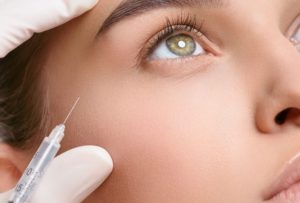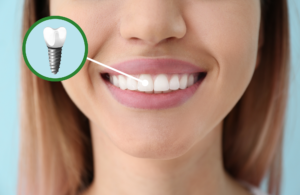San Diego Botox which is a brand name of botulinum toxin type A, can smooth out pesky wrinkles. It works by blocking the nerve signals that cause muscles to contract. It’s important to choose a doctor who has years of experience administering cosmetic treatments like this one.
There are several different brands of botox, including Dysport, Jeuveau and Xeomin, as well as newer ones such as Daxxify. Each one uses the same active ingredient but differs slightly in how it’s formulated.

Botox is one of the most popular cosmetic procedures that does not involve surgery. It is injected into the face to reduce fine lines and wrinkles. It is a safe and effective treatment. It can be performed by a doctor or nurse. The treatment is very quick and requires no downtime. It is also very affordable.
Botox works by blocking certain chemical signals from the nerves that cause muscles to contract. This relaxes the muscles, which reduces the appearance of fine lines and wrinkles. It is also useful for treating neck spasms and preventing eyelid twitching. The botulinum toxin that is used in this procedure is a purified protein from the Clostridium botulinum bacteria. This toxin is considered safe when it is injected in small, precise doses.
The results from a botox injection can last for three to four months, but it may be possible to get longer-lasting effects with repeated treatments. It is important to note that you should not use this treatment if you are pregnant or breastfeeding. You should also avoid rubbing or scratching the area of your face after the treatment. This can reduce the effectiveness of the Botox.
If you are interested in getting a botox treatment, make an appointment with your dermatologist. They will perform a skin test to ensure you are not allergic to the product. Then, they will inject the botox into the areas you want to treat. They will take care not to hit the blood vessels or nerves in the area.
After the treatment, you can return to work and other activities right away. Some people may experience mild redness and swelling, but these effects should subside within a few days. If you are concerned about pain, your dermatologist can numb the area with a topical anesthetic or ice. They may even use a massage technique to help the anesthetic take effect.
While many people think of Botox as a brand name, it is actually an FDA-approved neuromodulator. It is a form of the botulinum toxin, which can temporarily paralyze muscles. The most common uses of this drug include treating wrinkles and frown lines, but it can be injected into other parts of the body to reduce muscle spasms.
It’s safe
Although some people have concerns about injecting a toxin, it’s important to remember that Botox isn’t the same as the Clostridium botulinum bacteria that cause botulism, which can be life-threatening. The botulinum toxin in cosmetic treatments works by blocking the nerve signals that stimulate muscle contractions. A trained professional knows how to inject it in a way that ensures your safety.
The injection procedure is quick, safe and painless. You’ll be given a numbing cream or ice pack before the treatment to minimize discomfort, if any. Then, your practitioner will mark the areas where the injections will be performed and cleanse the skin before giving you the shots. You’ll probably be able to return home right away, though you may need to avoid rubbing or massaging the injection sites for 24 hours.
Most Botox side effects are mild and temporary. You might experience redness or bruising at the injection site, but these symptoms should fade within a day or two. Some patients also experience a headache. Headaches are typically caused by the needle hitting a blood vessel or muscle. Nonsteroidal anti-inflammatory drugs or opioids can help reduce headaches.
In addition to smoothing facial lines, botox can be used to treat a variety of medical conditions. For example, it can be used to reduce the frequency of migraines, as well as treat a condition that causes neck spasms called cervical dystonia. It’s also been found effective in treating a condition that causes sweating too much, known as hyperhidrosis.
However, the results of botox are dependent on the expertise of your injector. Inexperienced injectors can introduce too much of the drug, which can cause a “frozen” look. They might also use the toxin in multiple areas of the face, which can result in a droopy appearance in the eyelids or eyebrows. For these reasons, you should only use a qualified aesthetician who is familiar with the facial anatomy and the effects of botulinum toxin. Also, make sure to ask about the medical history of your injector. This will help you determine whether they’re a good fit for your needs.
It’s effective
Although some people fear botox, it’s actually safe and effective when used by trained medical professionals. It works by weakening or paralyzing certain muscles and blocking certain nerves. This can smooth wrinkles and fine lines and can give a more youthful appearance to the face. The effects of the injections last for about three to twelve months. Like any procedure, it has some side effects, including pain or bruising at the injection site and headaches. However, most of these side effects are mild and temporary.
The main ingredient in Botox is a neurotoxin that temporarily paralyzes muscles. It is made by the Clostridium botulinum bacteria, which can cause a serious form of food poisoning called botulism. However, the Botox injectables used by licensed health care providers are purified and sterilized. They are also subject to rigorous medical control standards approved by the U.S. Food and Drug Administration (FDA).
It is important to understand that the botulinum toxin does not affect your brain cells, which control movement. Injections of Botox do not cause a “drooping” of the eyelids, as some people claim. The effect is very specific and only occurs in the area of the muscle being injected. The results are usually noticeable within a few days after the procedure.
Botox is most often used to treat existing wrinkles, but it can also be a preventative treatment. It can be injected into the forehead and temples to reduce the appearance of fine lines and wrinkles before they develop. It can also be injected in the neck to treat neck spasms and hyperhidrosis (excessive sweating).
During a botox injection, your doctor will cleanse your skin and mark the areas that are to be injected. You will then receive a numbing cream or ice pack to minimize any discomfort. The injections are quick and easy, lasting less than 30 minutes. Afterward, you will need to return for retreatment every three to six months. It is important to choose a reputable practitioner, as this will reduce the risk of side effects and ensure the correct placement of the injections.
It’s affordable
Botox and other neuromodulators like Xeomin, Dysport, and Jeuveau are extremely popular, but they can also be confusing for those looking to get them done. So, with the help of some injectables experts, we compiled a mini guide to help you understand everything you need to know about the cost, how long they last, and more.
Botox prices vary depending on where you get them and your doctor’s skill level. Some places charge a per-unit fee, while others charge by the area treated or by the number of units required. If you’re a first-time customer, some providers will offer specials to encourage you to try the procedure.
The price of each unit of Botox depends on the type of botulinum toxin used, as well as other factors such as its origin and brand. Some places advertise a low cost per unit but this is misleading because they might be using a cheaper version of the same product or another brand of botulinum toxin that is not FDA-approved.
Your doctor’s education and experience are also a factor in the Botox cost, and many highly skilled providers will charge a premium for their services. This is because they can deliver better results and minimize side effects like bruising, overdoing the treatment, and a “spock brow.” High-level providers include fellowship-trained oculoplastic surgeons, cosmetic dermatologists, and plastic surgeons.
Some providers will offer discounts or deals on Botox to attract new clients. However, these promotions are typically only offered for a limited time and should not be considered a standard price for the service. Moreover, you should always research the provider before making any decisions.
In general, one unit of Botox costs $10 to $25 at most practices. It is usually recommended to use 20 units per treatment area. You can save money on the units by getting a larger package or asking your doctor to reduce the amount of Botox needed for each treatment.
Another way to save money on Botox is by joining a rewards program, such as Allergan Aesthetics’ Alle rewards. The rewards program offers perks such as rebates on your favorite Allergan products, including Juvederm dermal fillers, CoolSculpting fat-melting treatments, and more.







